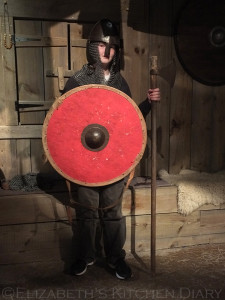
Glasmore was an abbey one and a half miles from Swords. The Cave’s Marsh site would also have been an ideal location from which to launch attacks on the major monastic sites at Lusk, Swords and smaller ones such as Glasmore. Present day – water channels that surrounded the island are now silted up If there was a temporary Norse settlement at Cave’s Marsh, the island would have been a logical choice being an easily secured and defended site. With t he construction of the railway viaduct in the 1840s, creating what is effectively an artificial saline lake with a vastly reduced tidal range, the island gradually disappeared as the surrounding water channels silted up (the island is also visible in the Clarges Greene & Son map of 1851). Historical maps made between 18 show a 2 acre island at the northern end of Cave’s Marsh.

The longphort at Linn Duachaill (Louth) and the one which eventually became the city of Dublin (dating to the 9 th century) are good examples. 3 This might then develop into something more permanent with added fortifications and living quarters. Initially, a longphort would be built by beaching a long ship and then building up a bank of earth against it on the landward side. The sites were easily defended, sheltered, and gave speedy access to the open sea if required. Intended as overwintering sites, longphorts were found along rivers (usually at a tributary) or in estuaries (such as the Broadmeadow estuary) where ships could be safely moored and protected. A longphort was basically a fortified naval encampment which served as a base for raiding parties as they attacked and plundered sites in the surrounding area. The term longphort is a compound word that may have been coined by Irish monks – long meaning ship from the Latin word “longus” and port from the Latin word “portus”, meaning landing place or shore. To date no skeletal remains have been found.“The headquarters of the Danes in Fingal were at Malahide, formerly called Inver Domnon.” 6Īve’s Marsh is believed to be the site of a Norse ‘longphort’ which existed probably in the late 9 th century. Outhouses, pits and plots for cultivation were also found. The layout was typical with rectangular houses along a central route on a north-south axis. In the 1990s further remains of a dwelling and some pottery were found at Hanover Street. Finds include a trackway and oyster shell pits. The powerful McCarthy clan owned this fort and though initially rivalry would have been inevitable, by the 1100s we know that power was officially shared between the Vikings and the McCarthys in the form of equal trading rights.Īlthough not as much excavation has been done as in Dublin or Waterford we know much about the Cork settlement from several excavations since the 1970s. Near this settlement was an old fort called Sean Dun, now Shandon.

Remains of a water mill were found on the Kiln River with a dated inscription from 1020AD. The second settlement is believed to have been nearby on an island near South Main Street where South Gate Bridge linked the two sites and was known at the time as Droichet.Ī third settlement was on the northern valley side near Lower Blackpool. These churches are St Sepulchre, St Mary del Nard, St Michaels and St John the Evangelist. Four of the churches date from c1000AD and therefore would have been built at the latter end of Viking Age Cork, by which time many Vikings had become Christianised and adopted Gaelic ways. Keysers Hill and Cove Street are Viking names that have survived from this period. The first longphort or settlement was on the southern valley, near present day Barrack Street. In 914 the Danish Vikings arrived in Cork and settled in 3 main areas:

In 990 the lector, possibly a reader, a rare skill at that time, is taken captive and ransomed by Brian Boru at Scattery Island. Gothfrith son of Ivar even sails as far as Roscarbery and takes hostages. īy 915 when we know that Ragnall had instigated the reestablishment of the Viking coastal strongholds from Waterford to Dublin, a new cohort came as far as Cork. In 873 it was said that the Dublin fleet “ravaged from Cork and much of Munster”. The annals record the death of the Norse leader “chief of the foreigners” Gnimhbeolu, killed by the Déise in 865.

This settlement was situated typically at the lowest crossing point of the river. He had also been victorious over the Vikings at Sciath Neachtain. There was a settlement at South Main Street which was raided by the King of Cashel, Olchobar, in 848. The first recorded attack by Vikings was in 820 on Corcach Mor na Mumhan, a flourishing monastery from the 7th century. In 800AD Cork consisted of marshland and waterways at the mouth of the River Lee with several tidal islands surrounded and sheltered by valleys to the north and south.


 0 kommentar(er)
0 kommentar(er)
